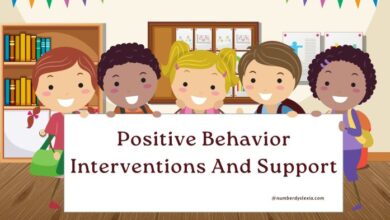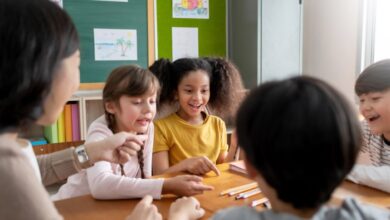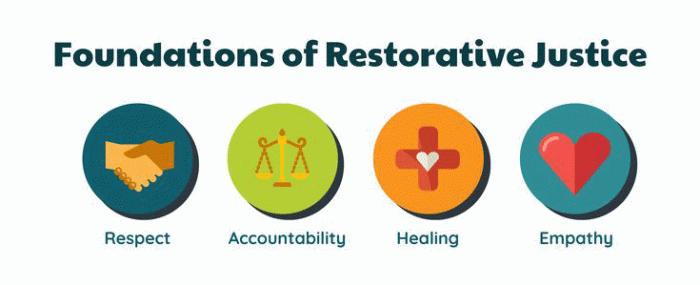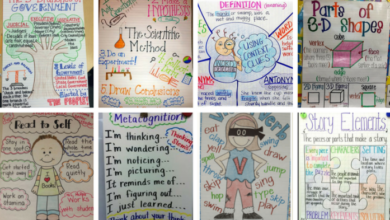
5 Reasons Youre Not Connecting With Students & What to Do
5 reasons youre not connecting with your students and what you can do about it – Have you ever felt like a disconnect between you and your students? You’re not alone. Many teachers struggle to build meaningful connections in the classroom, which can lead to disengagement and poor learning outcomes. “5 Reasons You’re Not Connecting With Students & What to Do” delves into the common culprits behind this challenge, providing practical solutions to help you foster a more engaging and supportive learning environment.
From creating a welcoming classroom space to tailoring your teaching methods to diverse learning styles, this blog post offers actionable strategies to strengthen your connection with students and unlock their full potential. Let’s explore the five key areas that can impact student engagement and discover how to create a more positive and impactful learning experience for everyone.
Lack of Connection and Engagement: 5 Reasons Youre Not Connecting With Your Students And What You Can Do About It
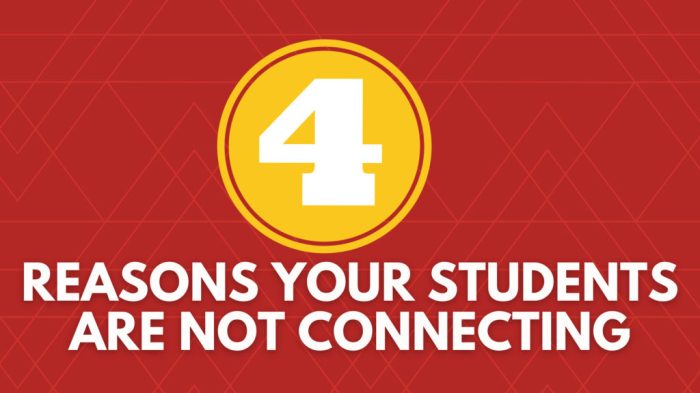
Imagine a classroom where students are actively participating, asking questions, and genuinely invested in the learning process. This is the ideal scenario, but it’s not always the reality. When students feel disconnected and disengaged, their learning journey can be significantly hindered.
This lack of connection can stem from various factors, including a lack of understanding, a feeling of being unheard, or simply a lack of interest in the subject matter.
The Importance of Student Engagement and Connection
Student engagement and connection are crucial for fostering a positive and effective learning environment. When students feel connected to their teachers and classmates, they are more likely to feel comfortable asking questions, sharing their ideas, and participating in discussions. This sense of belonging and acceptance encourages them to take ownership of their learning and actively seek knowledge.
Classroom Activities That Foster a Sense of Community and Belonging
Creating a classroom environment where students feel valued and respected is essential for fostering a sense of community and belonging. Here are some examples of activities that can help achieve this:
- Icebreaker Activities:Start each class with a fun and engaging icebreaker activity that allows students to get to know each other better. This could be anything from sharing a fun fact about themselves to participating in a quick game.
- Group Projects:Encourage collaboration and teamwork by assigning group projects that require students to work together to achieve a common goal. This fosters communication, problem-solving skills, and a sense of shared responsibility.
- Class Discussions:Create a safe and inclusive space for students to share their thoughts and ideas during class discussions. Encourage active listening and respectful dialogue, where everyone feels comfortable expressing their opinions.
- Student-Led Activities:Give students opportunities to take the lead in the classroom by allowing them to present their work, lead discussions, or even teach a lesson to their classmates. This empowers them and fosters a sense of ownership over their learning.
The Impact of Student Disengagement on Learning Outcomes
When students are disengaged, they are less likely to pay attention, participate in class, or complete assignments. This lack of effort can significantly impact their academic performance. Research has shown that disengaged students are more likely to:
- Have lower grades:Disengaged students tend to struggle with academic performance and receive lower grades.
- Be less likely to graduate:Disengagement can lead to a decline in motivation and a lack of interest in pursuing higher education.
- Experience higher levels of stress and anxiety:Feeling disconnected and overwhelmed can contribute to increased stress and anxiety levels.
- Have difficulty forming positive relationships with peers and teachers:A lack of engagement can lead to social isolation and difficulty building meaningful connections.
Inadequate Learning Environment
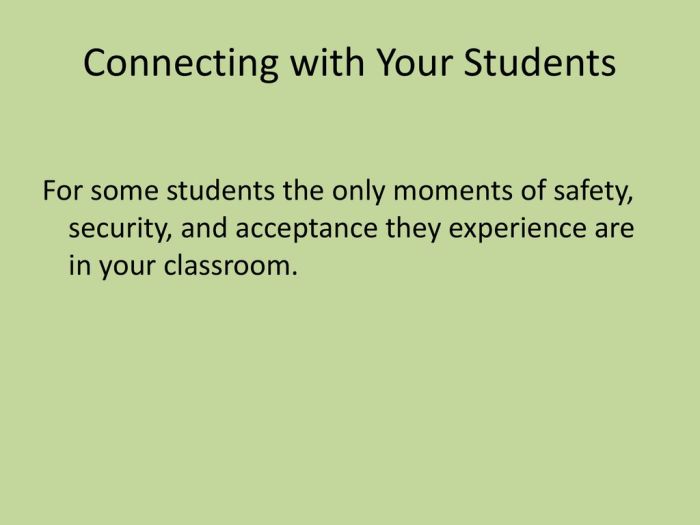
A supportive and engaging learning environment is crucial for student success. When students feel comfortable, respected, and challenged in a positive way, they are more likely to participate, learn, and achieve their full potential.
The Role of Physical Space and Classroom Design
The physical space of a classroom can significantly impact student engagement and learning. A well-designed classroom fosters a sense of belonging, encourages collaboration, and promotes active learning.
- Flexibility and Functionality:A classroom should be adaptable to various teaching styles and activities. Flexible seating arrangements, movable furniture, and designated spaces for group work, individual study, and presentations allow students to learn in different ways and cater to their individual needs.
It’s tough to connect with students when you’re stuck in a rut. Maybe you’re not engaging with their interests, or maybe you’re just not being yourself. Whatever the reason, it’s time to shake things up! Just like the vibrant nightlife in Mexico, where the party scene tastes a lot like spicy tamarind vodka , bring some excitement to your classroom.
Try incorporating new activities, get to know your students on a personal level, and most importantly, be yourself. You’ll be surprised at how much a little change can go a long way in building meaningful connections.
For example, a classroom with movable desks and comfortable chairs can easily transform into a collaborative space for group projects or a quiet area for individual study.
- Visual Stimulation and Organization:A visually stimulating classroom can enhance learning and create a more engaging atmosphere. Colorful walls, inspiring quotes, student artwork, and well-organized learning materials can make the space more inviting and engaging. For example, a classroom with bright colors, inspirational posters, and a bulletin board showcasing student work can create a more positive and stimulating learning environment.
- Technology Integration:Integrating technology into the classroom can enhance learning and make it more engaging. Interactive whiteboards, laptops, tablets, and access to online resources can provide students with opportunities to learn in new and exciting ways. For example, a classroom with a smartboard can allow students to participate in interactive lessons, research information online, and collaborate on projects digitally.
- Comfortable and Safe Space:A classroom should be comfortable and safe for all students. This includes providing adequate lighting, comfortable seating, and a temperature that is conducive to learning. For example, a classroom with well-lit workspaces, comfortable chairs, and a thermostat that maintains a comfortable temperature can help students focus and learn effectively.
Creating a More Welcoming and Engaging Classroom Atmosphere
A welcoming and engaging classroom atmosphere is essential for fostering a positive learning environment. Students are more likely to participate and learn when they feel respected, valued, and connected to their teacher and classmates.
Sometimes, it feels like our students are worlds away, lost in their own thoughts. Maybe they’re not engaged with the material, or maybe they just need a little more connection to the world around them. That’s where tapping into the five senses comes in! Try incorporating activities that encourage exploration through touch, taste, smell, sight, and sound, like those found in 25 five senses activities to engage kids in the world around them.
These activities can help bridge the gap between the classroom and the real world, making learning more meaningful and memorable for your students.
- Establish Clear Expectations and Routines:Clear expectations and routines help students feel safe and secure, knowing what is expected of them. This reduces anxiety and allows students to focus on learning. For example, a classroom with a consistent daily schedule, clear rules, and procedures for transitions can help students feel organized and prepared for learning.
- Build Positive Relationships:Building positive relationships with students is essential for creating a supportive and engaging learning environment. This can be achieved through genuine conversations, active listening, and showing interest in their lives. For example, a teacher who takes the time to learn about their students’ interests, hobbies, and aspirations can create a more personal and meaningful connection with them.
- Promote Collaboration and Communication:Encourage students to collaborate and communicate with each other. This can be done through group projects, peer tutoring, and classroom discussions. For example, a teacher who encourages students to work together on projects, share ideas, and help each other can create a more collaborative and supportive learning environment.
- Celebrate Success and Effort:Acknowledge and celebrate student successes and efforts. This can be done through verbal praise, written feedback, or small rewards. For example, a teacher who publicly recognizes students’ achievements, provides specific feedback on their work, and offers small rewards for effort can motivate students and foster a positive learning environment.
Ineffective Communication and Feedback
Effective communication is the bedrock of a successful learning environment. When teachers fail to communicate clearly and provide meaningful feedback, students can feel lost, confused, and disengaged. This can lead to a lack of understanding, decreased motivation, and ultimately, a decline in academic performance.
Clear and Concise Communication
Clear and concise communication is essential for effective teaching. It involves using language that is appropriate for the students’ age and understanding, avoiding jargon, and providing clear instructions. Students should be able to easily understand what is expected of them and how they can achieve success.
“Effective communication is a two-way street. It’s about being able to clearly convey your message and also actively listening to and understanding the feedback you receive.”
Examples of effective communication strategies include:
- Using visual aids such as diagrams, charts, and videos to supplement verbal explanations.
- Breaking down complex concepts into smaller, more manageable chunks.
- Encouraging students to ask questions and providing clear and concise answers.
- Using a variety of communication methods, such as lectures, discussions, group work, and individual projects.
Effective Feedback Strategies
Feedback plays a crucial role in student learning. It provides students with valuable insights into their progress and helps them identify areas for improvement. Effective feedback should be timely, specific, and constructive.
- Provide feedback that is focused on the student’s strengths and areas for improvement.
- Use specific examples to illustrate feedback points.
- Offer suggestions for how students can improve their work.
- Provide opportunities for students to respond to feedback and ask questions.
Active Listening and Student-Centered Communication
Active listening involves paying close attention to what students are saying, both verbally and nonverbally. It also involves asking clarifying questions, summarizing key points, and demonstrating empathy. Student-centered communication focuses on understanding the student’s perspective and needs. This involves asking questions about their learning preferences, challenges, and goals.
Sometimes, it feels like we’re all driving towards the same destination, but our students just aren’t getting in the car. Maybe we’re not offering them the right seat, or maybe they’re just not feeling the engine. Just like how car giants are being forced to confront some hard truths over the EV transition , we need to adapt to the changing needs of our students.
Maybe we need to rethink our teaching methods, or maybe we just need to listen a little more closely. The key is to keep moving forward and find the right path to connect with our students.
“When students feel heard and understood, they are more likely to engage in learning and feel connected to their teachers.”
Examples of active listening and student-centered communication strategies include:
- Holding regular one-on-one conferences with students to discuss their progress and address any concerns.
- Creating a classroom environment where students feel safe to ask questions and share their ideas.
- Using open-ended questions to encourage students to think critically and express their opinions.
- Demonstrating genuine interest in students’ lives and experiences.
Misaligned Learning Styles and Approaches

Every student learns differently. When a teacher’s teaching style doesn’t align with a student’s learning style, it can lead to disengagement, frustration, and difficulty in grasping concepts. Recognizing and accommodating diverse learning styles is crucial for fostering a positive and productive learning environment.
Identifying Different Learning Styles, 5 reasons youre not connecting with your students and what you can do about it
Understanding how students learn best is the first step to tailoring instruction. Some common learning styles include:
- Visual Learners:These students learn best through visual aids like diagrams, charts, videos, and demonstrations. They often prefer to see information presented in a clear and organized way.
- Auditory Learners:Auditory learners thrive on listening and verbal communication. They respond well to lectures, discussions, and audio recordings. They may benefit from repeating information out loud or listening to audio summaries.
- Kinesthetic Learners:Kinesthetic learners learn by doing and experiencing. They prefer hands-on activities, role-playing, and movement. They might need to physically manipulate objects or participate in interactive exercises to grasp concepts.
- Read/Write Learners:Read/write learners prefer to learn through text-based materials like books, articles, and notes. They enjoy taking detailed notes and reading to gain knowledge.
Tailoring Teaching Methods
Once you have a better understanding of your students’ learning styles, you can adapt your teaching methods to cater to their individual needs.
- Provide Multiple Representations:Present information in a variety of ways to cater to different learning styles. For example, use visuals, audio recordings, hands-on activities, and written materials.
- Offer Choice and Flexibility:Allow students to choose how they learn best. This could involve offering different assignments, activities, or even seating arrangements.
- Incorporate Technology:Technology can be a valuable tool for accommodating diverse learning styles. Consider using interactive whiteboards, online simulations, and educational apps to engage students.
- Use Collaborative Learning:Group work can be a powerful way for students to learn from each other. Encourage students to work together, share ideas, and learn from each other’s perspectives.
Strategies for Engaging Students with Different Learning Styles
Here are some practical strategies to engage students with different learning styles:
- Visual Learners:Use colorful charts, mind maps, diagrams, and presentations to illustrate concepts. Incorporate videos, animations, and visual metaphors to make learning more engaging.
- Auditory Learners:Use audio recordings, lectures, discussions, and debates to facilitate learning. Encourage students to record themselves summarizing information or explaining concepts.
- Kinesthetic Learners:Incorporate hands-on activities, role-playing, simulations, and movement breaks into your lessons. Allow students to build models, conduct experiments, or participate in active learning exercises.
- Read/Write Learners:Provide students with access to books, articles, and online resources. Encourage them to take detailed notes, write summaries, and participate in writing activities.
Lack of Relevance and Meaningful Connections
Imagine a student sitting in class, their eyes glazed over, their mind wandering, completely disengaged from the lesson. This scenario is not uncommon, especially when students fail to see the relevance of what they are learning to their lives and the world around them.
Connecting learning to real-world applications and student interests is crucial for fostering engagement, motivation, and a deeper understanding of concepts.
Making Learning Relevant
To make learning truly relevant, it’s essential to bridge the gap between abstract concepts and real-world applications. This involves showing students how the knowledge they are acquiring can be used to solve problems, make informed decisions, and contribute to society.
- Connect to Current Events:Incorporate current events and real-world issues into lessons to demonstrate how concepts apply to the world around them. For example, in a history class, students could analyze primary sources related to a current political conflict to understand its historical context.
- Use Real-World Examples:Instead of relying solely on textbook examples, incorporate real-world scenarios and case studies that students can relate to. For example, in a math class, students could calculate the cost of a trip to a theme park using real-world data.
- Incorporate Technology:Technology can be a powerful tool for making learning relevant and engaging. For example, students could use online simulations to explore scientific concepts, create videos to explain historical events, or design websites to showcase their learning.
Fostering Student Interests
It is important to acknowledge and tap into the unique interests and passions of each student. When students feel like they are learning something they care about, they are more likely to be engaged and motivated.
- Allow for Choice and Flexibility:Give students opportunities to choose projects and activities that align with their interests. For example, in a writing class, students could choose to write a blog post, create a podcast, or design a website.
- Integrate Student Interests into Lessons:Look for ways to incorporate student interests into your lessons. For example, if a student is passionate about sports, you could use sports statistics to teach math concepts.
- Create Opportunities for Collaboration:Encourage students to work together on projects that allow them to share their interests and perspectives. For example, students could create a collaborative presentation on a topic they are passionate about.
Providing Meaningful Applications
Beyond simply connecting learning to the real world, it’s essential to provide students with opportunities to apply their knowledge in meaningful ways. This could involve real-world projects, community service initiatives, or internships.
- Project-Based Learning:Project-based learning provides students with opportunities to apply their knowledge and skills to solve real-world problems. Projects can be designed to address community needs, explore current events, or solve hypothetical scenarios.
- Community Service:Engaging in community service allows students to apply their learning to make a positive impact on their community. For example, students could volunteer at a local food bank, tutor younger students, or participate in environmental cleanup efforts.
- Internships:Internships provide students with valuable hands-on experience in their chosen field. They can gain real-world skills, build their professional network, and apply their classroom learning to real-world situations.


